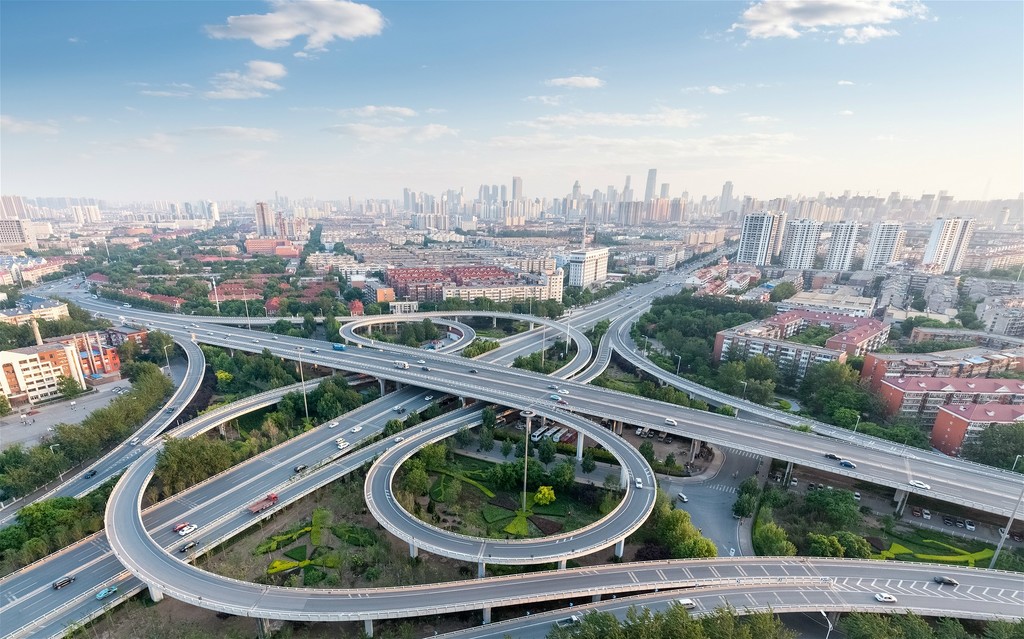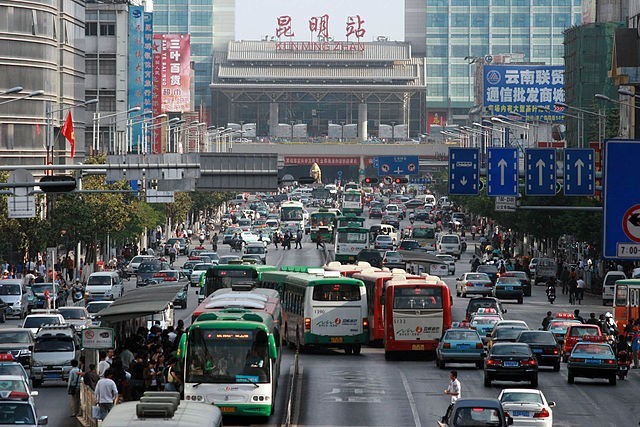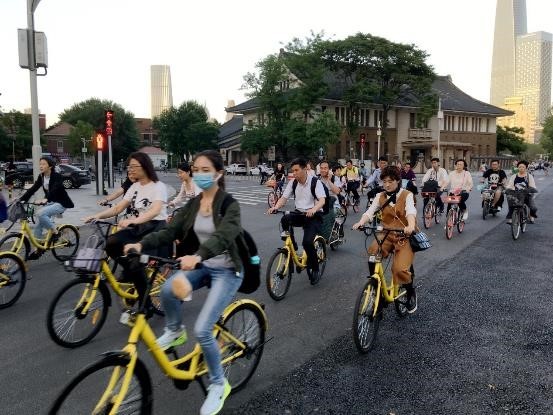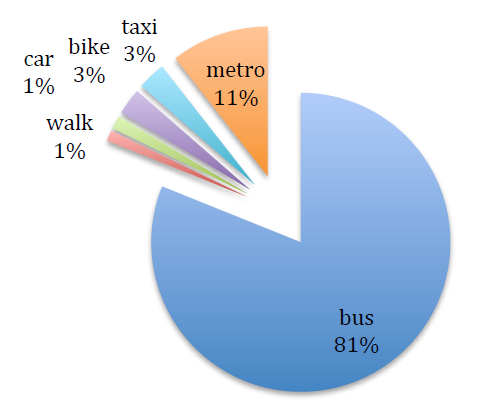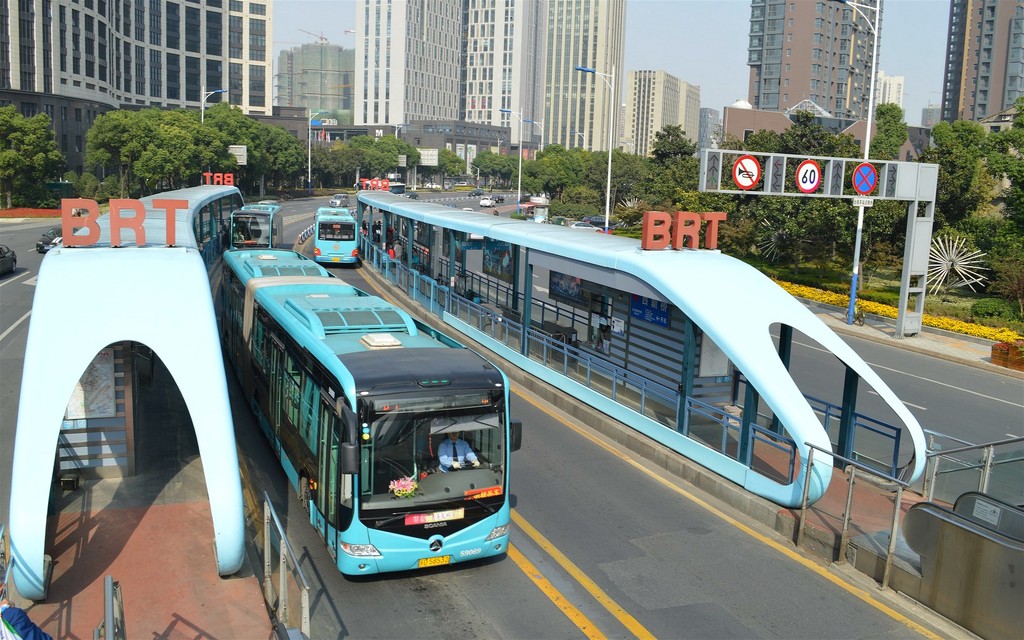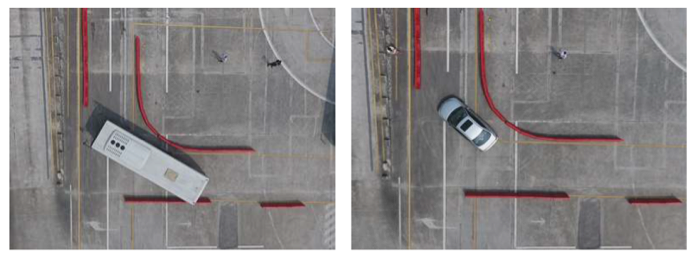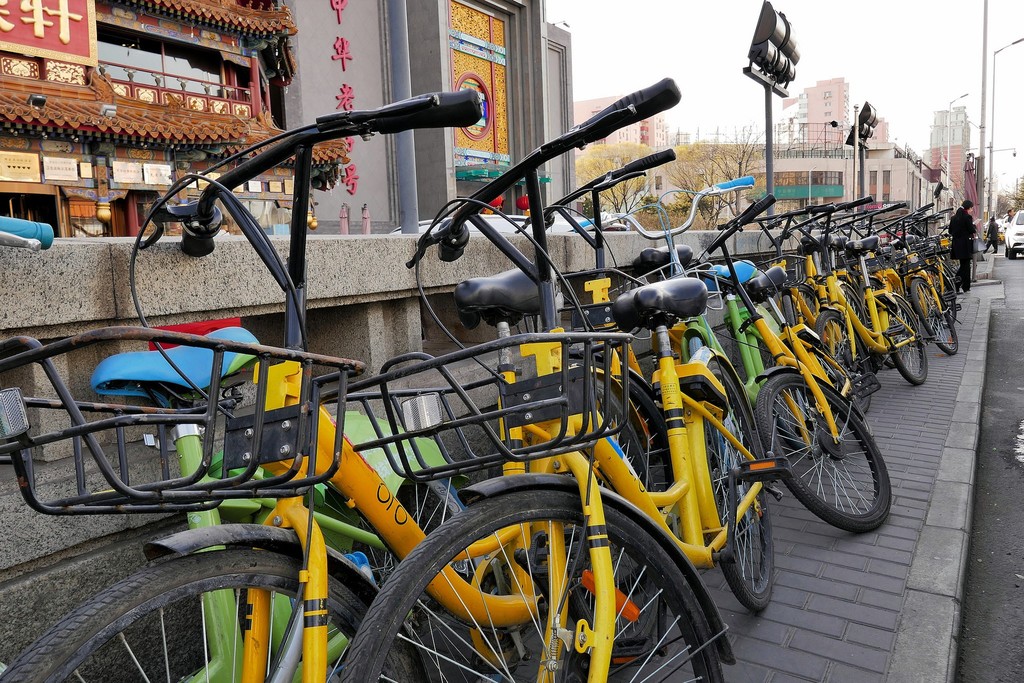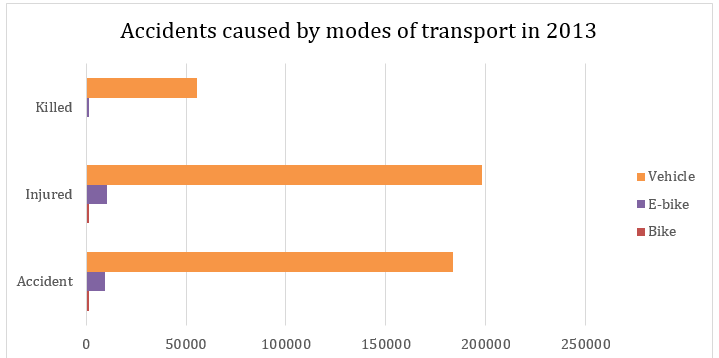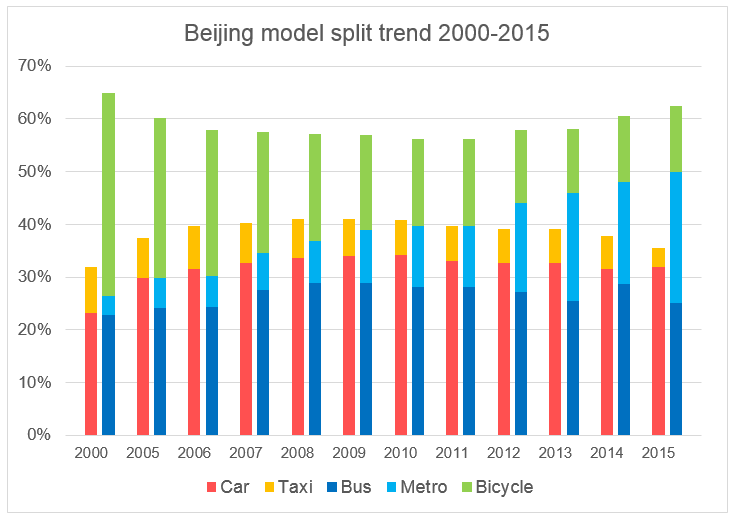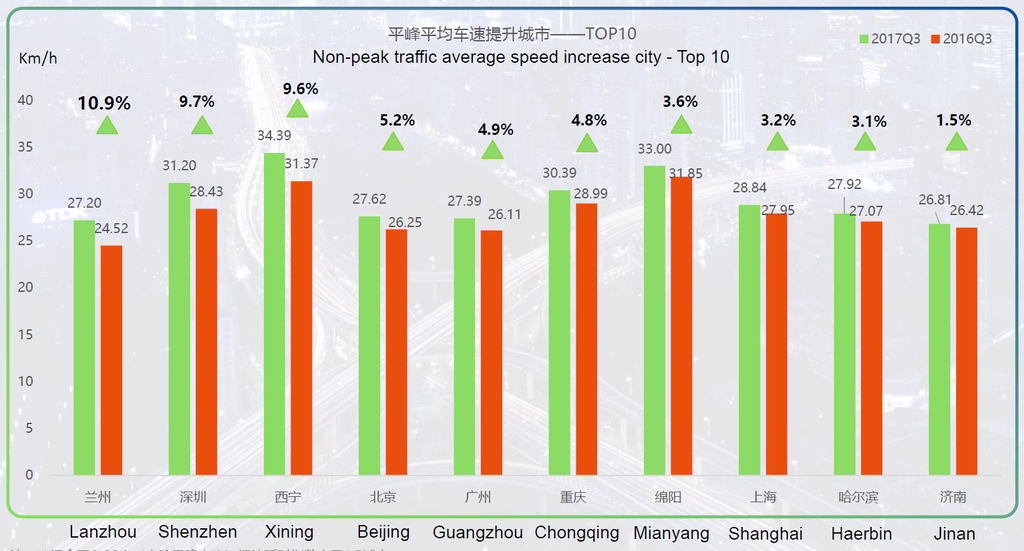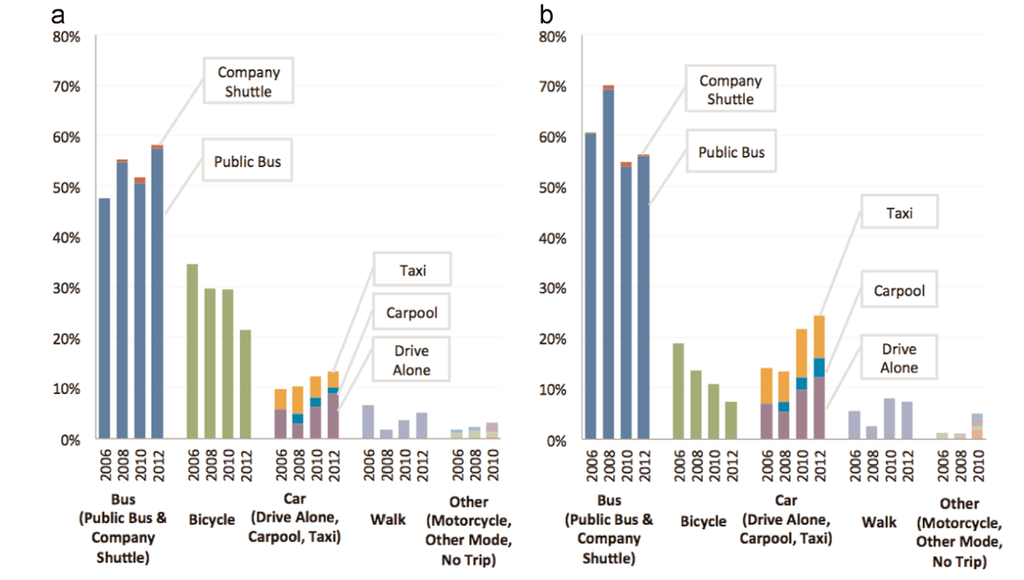For years, China’s city planners have prioritised cars, but they’re now taking a different route.
|
Investing in public transport, supplemented by the electric bike and shared bike, are among the ways Chinese cities are trying to minimise car use (Image: chuyu) |
Plagued by congestion and pollution, China’s cities are exploring models of transportation that are more sustainable in their social, environmental and climate impacts. Some have emerged as global leaders, such as Hangzhou, southwest of Shanghai, which in 2017 won an international award for its municipal bike-sharing scheme. More recently Shenzhen, a major city north of Hong Kong, electrified its entire fleet of public buses, gaining worldwide recognition.
Over the past 40 years China has undergone rapid urbanisation. In the 1980s, the one-time “kingdom of the bicycle” saw economic reforms and the transition to motorised transportation. The country is now shifting again, this time towards modern, sustainable transportation. Today, in many leading cities, you can use your mobile phone to unlock a shared bike, ride it along a dedicated cycle path to the nearest Bus Rapid Transit (BRT) station, park the bike and ride on to your next destination, which may involve trains, buses, or electric bicycles. Such journeys are already an everyday occurrence in many Chinese cities.
As the world’s largest and most rapidly growing developing nation, China’s experience of large-scale experiments with transport and implementation is of great significance to other developing countries, indeed to all countries facing problems of congestion and air pollution.
|
Access the slideshow here. |
THE FALL OF ‘THE KINGDOM OF THE BICYCLE’
Urban transportation in China has been revolutionized since 1949, passing through four main stages on the way to becoming a pioneer in low-carbon public transport.
1949-1980 BASlC ‘GREEN’ TRANSPORTATION
From the foundation of the People’s Republic of China in 1949 to the start of the economic reform era of Deng Xiaoping in the1980s, cities were a small proportion of the total population and grew relatively slowly. In the absence of private automobiles, the bicycle – relatively affordable and easy to manufacture – became the main form of transport in China’s cities and China became known as ‘the Kingdom of the Bicycle’. Anyone who travelled around a Chinese city prior to 1980 will remember doing so on a bicycle supplemented by public buses.
|
A wave of bicycles crossing the Zhuhai Bridge in Guangzhou. Such sights were emblematic of ‘the Kingdom of the Bicycle’. (Image: The Guangzhou Daily) |
1980-1990 Motorised transport gathers speed
As China’s markets exploded from the 1980s, its cities expanded more rapidly together with the growth in private car ownership. While the number of bicycles and buses continued to increase, personal cars increased more rapidly.
|
China’s rapid growth of car ownership since 1980 (Image: Traffic Management Bureau Of The Public Security Ministry) |
2004-2012 Accelerated motorization and public transport development
As the economy grew and infrastructure improved, urban transportation saw rapid motorisation. Figures from the China Association of Automobile Manufacturers show annual car sales leapt from 2.37 million in 2001, to 28.88 million in 2017, an almost 15-fold increase. Between 2001 and 2010 sales grew by an average 24% annually. To address severe congestion and pollution, public transportation, notably subways and buses, expanded rapidly.
|
Traffic outside a train station in Kunming, Yunnan Province, 2008 (Image: Jialiang Gao) |
2012-2018 High-quality green transportation and continued motorization
Large-scale motorization resulted in severe congestion and air pollution. To make urban transportation greener and overcome gridlock, from 2012 both central and local governments promoted alternative forms of transport. Big cities began to limit car purchases and by 2018 Beijing, Shanghai, Shenzhen, Guangzhou, Tianjin, Hangzhou, Guiyang, and Shijiazhuang had restricted license plates for new cars in order to control the growth of car ownership. More than 10 cities now limit the use of cars by specific license plates. By 2018, the National Development and Reform Commission, China’s top planning authority, had approved subway and light rail lines in 23 cities. Investment in new forms of public transport reached over 800 billion Yuan (US$128 billion). Sustainable forms of public transport emerged and grew rapidly.
|
Bicycle Rentals: New mobility in Tianjin, 2008 (Image: ITDP) |
Urban rail and bus rapid transit: A response to rapid motorisation
China started large-scale construction of urban rail and bus rapid transit in 2004. By the fall of 2017, 29 Chinese cities had some form of urban rail (defined as subways, light-rail, monorail and automated people movers, or APMs), with 118 lines stretching 3,862 kilometres and carrying 17.68 billion passengers per year.
Urban rail systems in Shanghai and Beijing are longer than London’s and busier than those of New York and Paris. In 2018, in Beijing, Shanghai and Guangzhou, urban rail accounts for about half of all public transport journeys.
But rail transit, including subways, is expensive. The World Bank recommends that developing nations adopt the medium-capacity and bus-based BRT model – an approach also welcomed by China’s city planners. The Beijing BRT (bus rapid transit) system, launched in 2005, drew on the experiences of Latin American countries such as Brazil’s dedicated “corridors”, separate lanes specifically for BRT buses; enclosed stations; fast and frequent service; and pre-boarding fare collection. By early 2018, 32 Chinese cities had BRT systems, with more than ten others planning, designing or building them. The BRT system in Curitiba, southern Brazil, was a major influence on the early designs of China’s BRT systems.
In the early days, the application of Latin American BRT systems experienced problems of integration with existing bus routes, and designs had to be adapted to the structural needs of Chinese cities. China had numerous existing bus routes running along BRT corridors, so that the impact of the new lanes was limited. By contrast, in Curitiba, only a few routes ran along the corridor.
In 2009, Guangzhou City implemented a “dedicated corridor and flexible routes” model, allowing non-BRT buses to use the corridor, and BRT routes to operate outside it. The result was improved travel times.
Guangzhou’s BRT system also has a transport corridor, which combines diverse forms of transport. The corridor can handle 28,000 passengers per hour in peak direction – more than most subways and more than any light rail system worldwide. Due to a shift to BRT from more emission-intensive modes, increased fuel efficiency due to increase in mixed traffic speeds and increase fuel efficiency of buses due to improved transit vehicle speed, Guangzhou BRT has made significant reductions in the greenhouse gas CO2 amounting to 50,000 tons in the first year. In 2011 the Guangzhou BRT system won the Sustainable Transport Award and the UN Lighthouse Award.
|
4% of BRT riders switched from car and taxi and 3% from bike in 2010 (Image: ITDP) |
|
ABRT station in Jiangsu province, China. (Image: Conny Hetting 2012) |
Toward a people-centred street revolution
In response to the problems resulting from the rapid expansion of auto transport in terms of urban gridlock, air pollution and health, Chinese cities have started to redesign urban spaces.
When it comes to design, there is a greater focus on how people interact and live.
In 2016, Shanghai published the seminal Shanghai Street Design Guide. The guide emphasised walking and cycling – which planners had previously overlooked – and a reduction of space for vehicles. This aimed to expand space for pedestrians and ensure the free flow of bicycles in order to create a safer, more pleasant and convenient environment.
Street design is important for urban transportation. Different street designs lead to different traffic modes, For example, in Guangzhou’s Zhongshan dadao area, the street redesign reduced car lane space, leaving more space for BRT, separate bike lanes and public bicycles. As a result, the number of public transportation passengers rose from 520,000/day in 2009 to 830,000/day in 2010. Alongside Shanghai and Guangzhou, dozens of other cities including Wuhan and Nanjing, began working on their own guides to urban street design. More and more cities are joinimg the revolution in urban transportation with important implications for the quality of urban life
|
The Guangzhou Comprehensive Street Design Handbook tested turns of 4m, 5m, 8m, 10m and 12m radius with cars, 9-metre buses and 12-metre buses (Image: Guangzhou City Planning Design and Research Institute) |
Embracing innovation: the electric bicycle and shared bike schemes
As China’s rapid urbanization continues, commuters need new forms of transport. Electric bicycles and recent shared bike schemes, pioneered by brands including Ofo and Mobike, have swept the nation. They have met the public need for speed, convenience and economy in ways that are likely to influence traffic patterns. But the influx of bikes has also been blamed for clogging pavements and roadsides and causing a public nuisance.
By 2014, China had by some estimates over 200 million electric bicycles, which in a few years came to represent the main form of transport for numerous households. The number of private bicycles has been variously estimated at 250 to 500 million by 2015. As of May 2017, over 10 million bikes in Chinese cities were available in shared bike schemes, with over 100 million registered users making over one billion trips monthly.
Electric bicycles do not directly generate greenhouse gases, they take up little space on roads, and are suitable for short and medium-length journeys. They are faster than conventional bicycles and relatively inexpensive to buy and maintain. Above all, they allow riders to beat the urban gridlock caused by the cars that clog China’s roads. The electric bicycle is an excellent option in cities with underdeveloped public transport systems, while shared bikes can help cover the “last mile” problem – the last leg of a journey, between a transport hub or connecting stop, and home – in instances where public transport is insufficient, replacing short-distance car trips.
Data from bike-sharing firm Mobike shows that 81% of Beijing’s shared bikes are used around public transportation stops. The figure rises to 90% in Shanghai. (The government has discouraged electric-bike sharing.)
A first-quarter 2017 transportation report from mapping firm AutoNavi found the number of car journeys of five kilometres or less falling since shared bikes became available. Both Shanghai and Beijing saw drops of 5% from the previous year.
|
Chinese cities have had to adapt quickly to the boom in shared bikes, including careless parking and dumping (Image: Slices of Light) |
But these rapidly developing forms of transport challenge city planners. Electric bikes are relatively fast and their numbers are rapidly increasing but they have become a major cause of traffic accidents. Between 2013 and 2017 56,200 accidents involving electric bicycles resulted in death or injury in China, with 8,431 people killed and 63,500 injured. Compared with motorized vehicles (automobiles, trucks and buses), E-bike accidents are far fewer.
|
Chinese accidents caused by modes of transport in 2013 (Image: Road Traffic Accident Statistics Annual Report) |
With the growth in numbers of shared bikes, which can be left anywhere, cities are literally littered with bicycles, some parked illegally. The underlying problem is a lack of parking infrastructure and a failure to legislate bicycle use.
In recent years, the government has regulated the use of electric and shared bicycles. For example, China initially limited the speed and weight of electric bicycles, while some local governments simply limited their use.
The “Nanning model”, named after a city in southern Guangxi near the Vietnamese border, emphasized new traffic signals and improved signage and road safety education for electric bicycle riders so that the city and the electric bicycle could co-exist.
Similarly, the central government has issued regulations to regulate the rapidly growing numbers of shared bikes. Some cities have also started to improve and expand infrastructure such as bike lanes to boost “bike-friendliness.”
Lessons from China’s experience
China can provide valuable lessons for other countries facing the challenges of urban gridlock and pollution as it seeks to provide efficient and sustainable transport in its cities. The critical question remains whether China’s cities, particularly its mega cities, can provide effective alternatives to the automobile that reduces gridlock and enhances environmental sustainability.
Good quality public transportation is the foundation of sustainable mobility
For low carbon transport to grow, public transport, supplemented with bicyles and electric bicycles, must compete with cars in speed, convenience and comfort. Ultimately, the key is efficient public transport. This has been a key precept for some Chinese cities in curbing the growth of car use and shifting towards sustainable transportation.
High-capacity public transport (subways, trams and BRT) in São Paulo, Brazil, reaches 25% of the city’s population. In Beijing, the figure is 60%, which has allowed it to successfully replace some forms of private transport. By the end of 2015, Beijing Bus and Metro model reached 50% of transportation, with steady reduction in car and taxi use. The Beijing Municipal Transportation Commission announced annual decrease in over each of the past five years to 2018.
|
With the growth of high-capacity public transport (subways, trams and BRT) operations, Beijing experienced a significant increase in the use of bus and metro and a decrease in car, taxi and bicycle travel between 2000 and 2015. (Image: Beijing Transport Institute). |
|
Amap analysis report also shows that with the expansion of public transportation, the average speed of non-peak traffic in Beijing rose 5.2% in 2017 and that in Shenzhen 9.7% (Image: Amap) |
China’s cities have experienced rapid growth in car ownership in recent decades, but this does not mean high and rising levels of car use. High quality public transportations made possible reduced car used in the four biggest cities: Beijing, Shanghai, Guangzhou and Shenzhen. These cities have China’s highest car ownership, and the numbers increase every year, but as a result of their quality public transportation and other forms of green transportation, car usage has declined and traffic speed increased. This experience is shared with Tokyo and major European Union cities.
Developing an integrated multi-modal transportation system is vital
The future of transport in major cities requires efficient public transportation supplemented by bicycle and electric bicycle. Many car owners will then choose more efficient public transportation for commuting purposes and, as in New York City, many residents will choose not to purchase cars at all.
Building people-centred cities
After falling into the trap of turning streets into huge spaces dominated by cars, Chinese city planners are starting to recognize the importance of providing efficient public transportation and creating an efficient transportation system and a livable environment. This has given rise to a concerted shift towards expanded and more efficient public transportation and people-centred urban design.
The experience of Chinese cities shows that if sustainable public transport options are provided, residents will leave their cars at home. In Nanning, 45% of electric bicycle riders live in a car-owning household.
|
Alternative modes of transport previous to owning an e-bike(a) and current alternative if e-bike was unavailable(b) in Kunming. (Image: Transport Policy |
Embrace transportation innovation
As science and technology have advanced, new forms of transportation and modes of travel have appeared in China, such as electric bikes with long-life batteries and shared pubic bike schemes that rely on “fintech” (financial technology) payment systems. This transition has not been smooth but it is part of the process that has spurred the shift toward sustainable transportation with public transportation at its core.
This is a revised and expanded version of an article that appeared at China Dialogue.
Related articles
- John A. Mathews with Xin Huang and comments by Mark Selden and Thomas Rawski, The Greening of China’s Energy System Outpaces its Further Blackening: A 2017 update
- Hao Tan, A Global Industrial Rebalance: China, the U.S. and Energy-intensive Manufacturing https://apjjf.org/2018/10/Tan.html
- John A. Mathews and Hao Tan, China’s Continuing Green Shift in the Electric Power Sector: Evidence from 2016 data
- John Mathews and Hao Tan, China’s New Silk Road: Will it contribute to export of the black fossil-fueled economy?
- Sung-young Kim and John A. Mathews, Korea’s Greening Strategy: the role of smart microgrids
- John A. Mathews and Hao Tan, “China’s Continuing Renewable Energy Revolution: Global Implications”
- John A. Mathews and Hao Tan, “Jousting with James Hansen: China building a renewables powerhouse”



